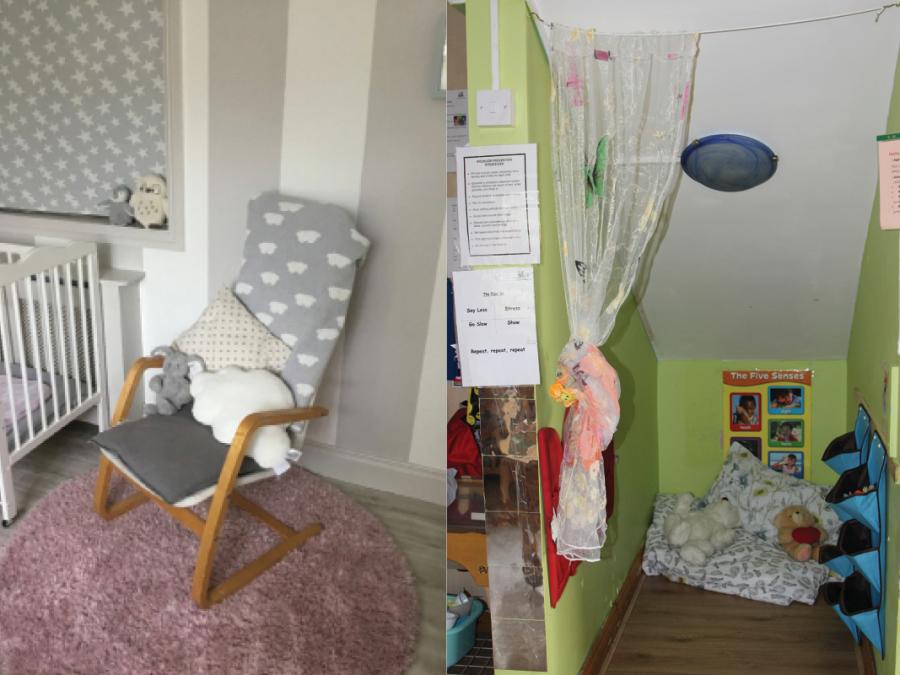Sound
Design considerations and awareness
Multisensory experiences include the idea of ‘soundscapes’ or a variety and diversity of sounds within a setting. Sound helps to define and characterise spaces and help to create a sense of place.
While the positive multisensory nature of sound must be remembered, it is important to note how sound might affect certain occupants, particularly infants or children with physical, sensory or cognitive challenges. For example, it is recognised that children on the autistic spectrum can experience hyper sensitivity to sound and find certain noises, such as unexpected loud sounds or repetitive low pitch sounds distressing. Children with communication, learning, behavioural, and interaction difficulties, and other challenges, rely on good room acoustics and sound insulation to support their comfort, learning, and social interaction.

34. High Care Childcare, Ballincollig, Cork, and Lotamore Preschool, Mayfield, Cork
High Care Childcare, Ballincollig, Cork, and Lotamore Preschool, Mayfield, Cork.
Design features
- A variety soft furniture, furnishings and textiles providing sound absorption.
Good acoustics are a key element when designing for children and adults with sensory, physical or cognitive difficulties. The basic principle for creating good acoustic environments is to increase sound – to help a person with a hearing impairment to hear important things; and at the same time reduce noise. It is not only about blocking noise out, it is also about ensuring that a person can hear pleasant and stimulating sounds.
A suitable acoustic environment is important; rooms with hard materials such as exposed steel especially in exposed roof structures, brick and block walls, tiled floors and extensive glazing, that reflect a lot of sound will be unsuitable for many children, including those wearing hearing aids (i.e. where the hearing aid amplifies noise). Low frequency noise (often caused by fans or pumps) is a major issue as it can interfere with speech recognition by masking important speech sounds.
Careful consideration must be given to the location of key spaces to provide a calm environment and restful spaces. Through careful planning and design, noise generating activities can be located so they do not cause disturbance.
The silent running of equipment and appliances is important. Acoustic separation and insulation can be used to dampen noise and protect the acoustic environment of the ELC setting.
Note: Please see page 278 for Technology for hearing difficulties.
Universal Design Guidance
- Locate quiet rooms such as sleep rooms or other relaxing areas away from high activity or noisy spaces such as outdoor play areas.
- Provide high levels of acoustic insulation in wall and floors to isolate noise generating activities or equipment. This can be achieved with the use of dense masonry walls that are plastered on both sides; through fitting two or more layers of gypsum board to stud walls or ceilings; or the installation of sound absorbent material such as mineral wool batts/quilt within wall or floor cavities.
- Avoid rooms with hard materials such as brick and block walls, tiled floors and extensive glazing, that reflect excessive amounts of sound.
- Use soft furniture, furnishing, textiles and planting to absorb sound.
- Locate equipment that generates low frequency noise, such as pumps or fans away from spaces occupied by children and staff.




